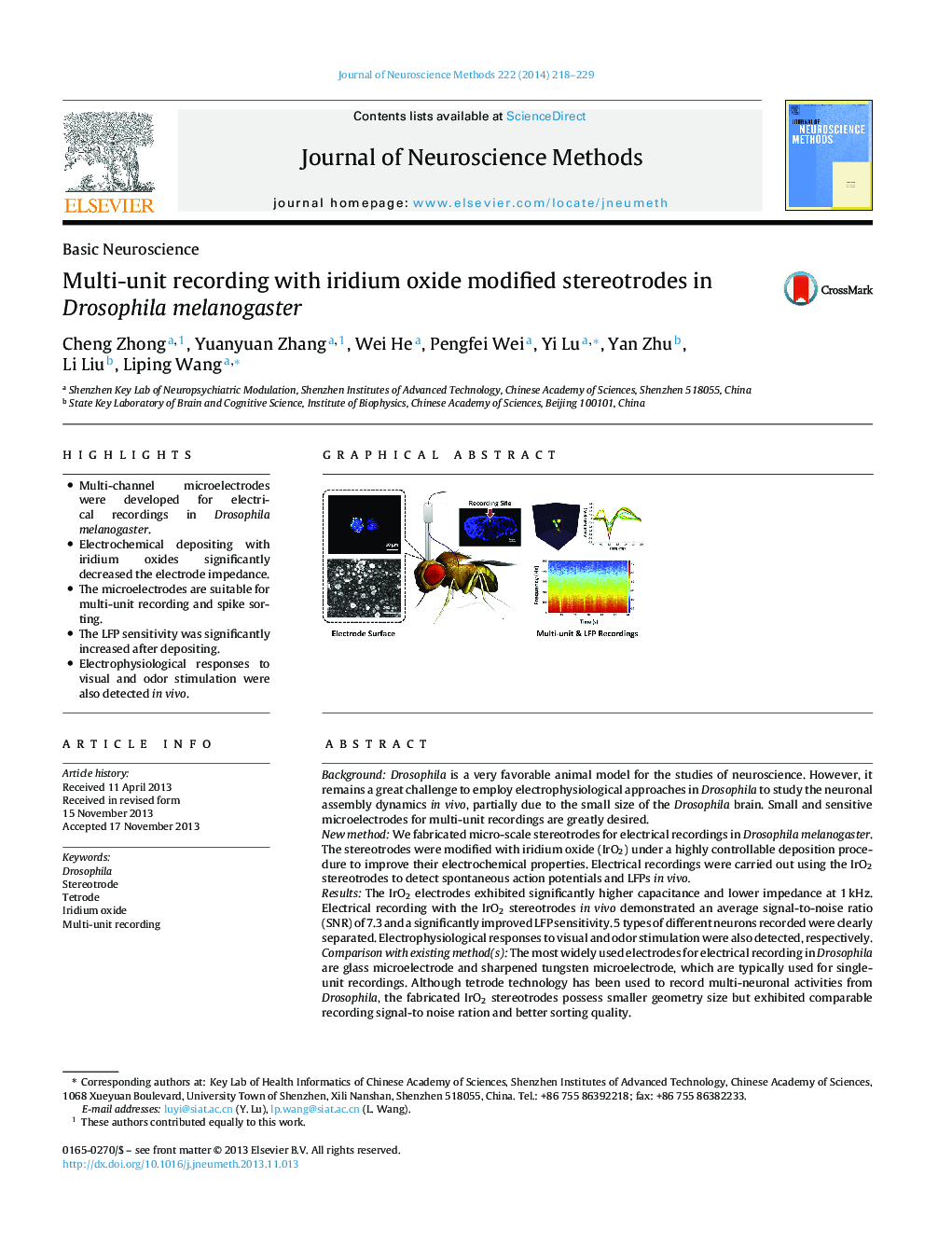| کد مقاله | کد نشریه | سال انتشار | مقاله انگلیسی | نسخه تمام متن |
|---|---|---|---|---|
| 6268921 | 1614647 | 2014 | 12 صفحه PDF | دانلود رایگان |

- Multi-channel microelectrodes were developed for electrical recordings in Drosophila melanogaster.
- Electrochemical depositing with iridium oxides significantly decreased the electrode impedance.
- The microelectrodes are suitable for multi-unit recording and spike sorting.
- The LFP sensitivity was significantly increased after depositing.
- Electrophysiological responses to visual and odor stimulation were also detected in vivo.
BackgroundDrosophila is a very favorable animal model for the studies of neuroscience. However, it remains a great challenge to employ electrophysiological approaches in Drosophila to study the neuronal assembly dynamics in vivo, partially due to the small size of the Drosophila brain. Small and sensitive microelectrodes for multi-unit recordings are greatly desired.New methodWe fabricated micro-scale stereotrodes for electrical recordings in Drosophila melanogaster. The stereotrodes were modified with iridium oxide (IrO2) under a highly controllable deposition procedure to improve their electrochemical properties. Electrical recordings were carried out using the IrO2 stereotrodes to detect spontaneous action potentials and LFPs in vivo.ResultsThe IrO2 electrodes exhibited significantly higher capacitance and lower impedance at 1Â kHz. Electrical recording with the IrO2 stereotrodes in vivo demonstrated an average signal-to-noise ratio (SNR) of 7.3 and a significantly improved LFP sensitivity. 5 types of different neurons recorded were clearly separated. Electrophysiological responses to visual and odor stimulation were also detected, respectively.Comparison with existing method(s)The most widely used electrodes for electrical recording in Drosophila are glass microelectrode and sharpened tungsten microelectrode, which are typically used for single-unit recordings. Although tetrode technology has been used to record multi-neuronal activities from Drosophila, the fabricated IrO2 stereotrodes possess smaller geometry size but exhibited comparable recording signal-to noise ration and better sorting quality.ConclusionsThe IrO2 stereotrodes are capable to meet the requirements of multi-unit recording and spike sorting, which will be a useful tool for the electrophysiology-based researches especially in Drosophila and other small animals.
Journal: Journal of Neuroscience Methods - Volume 222, 30 January 2014, Pages 218-229